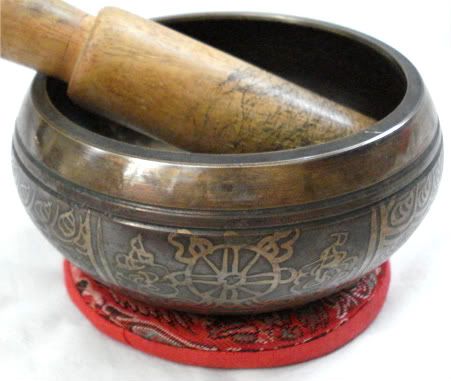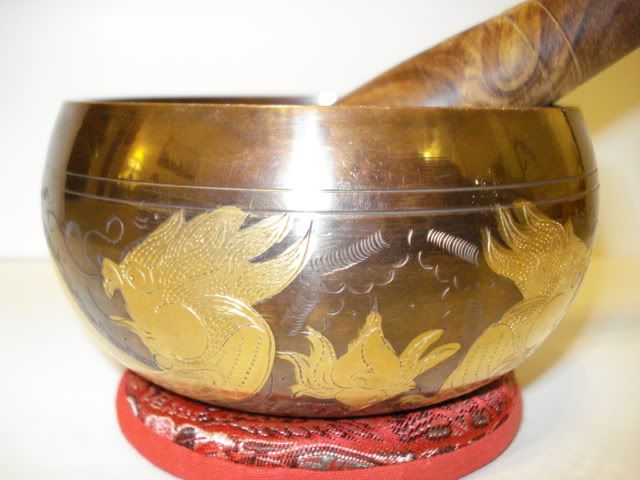Tibetan Singing Bowls
Tibetan singing bowls are traditionally constructed of a 7 metal alloy, believed to include gold, silver, copper, iron, lead, tin, and mercury. The singing bowls manufactured today contain five metals known as “Panchaloha” meaning five metals. Antique bowl often include gold, silver and nickel and made with hand hammering technique. The singing bowls were historically made in Tibet, Nepal, India, Bhutan, China, Japan and Korea. Today they are mostly made in Nepal, India, Japan and Korea. The best known types are from Himalayan region known as “Tibetan Singing bowl”. Though specific historical records are not present, the historians believe that techniques for making the singing bowls existed in Asia as early as 2500 years ago. It is said that singing bowl was introduced in Tibet around the same time Buddhism was introduced by Buddhist master Padmasambhava. The techniques of making singing bowl today are more commercialized.
The newer singing bowls are manufactured and they are made from bronze just like the antique one but the bronze alloy may not contain gold and silver like the antiques. New singing bowls are mostly made in Nepal and India. The best handmade bowls are made in Nepal. Some high quality new singing bowls are also made in Japan and Korea but they are not widely available.
The bowls are being used in many Asian cultures but the exact ritual context is often difficult to understand. The bowls are commonly used as bell, cymbols and similar instrument in meditative practice. It is believed that the use of sound and vibration helps to meditate in Both Buddhism and Hinduism. In Buddhism, and in Hinduism, sound is an important part of spiritual practice. In the Buddhist doctrine, out of nine methods of realization of reaching enlightenment, the seventh way is the sound. Due to this fact, the sound produced by the bowl was used by Buddhist practitioners as part of their religious rituals and music. Certain sounds are used as therapy in many cultures, especially when someone is seen as out of balance or having lost his natural internal rhythm.
Today, singing bowls are most often used as meditation aids. However, the singing bowl can be used as decoration piece or enjoy and relax with the sound that produces from singing bowl. Many people are fascinated with Tibetan Singing Bowls regardless of any spiritual connections.
Find good quality tested singing bowl at http://www.vajra.biz
http://shakun.ecrater.com
 I am a collector of singing bowl. I collect different type and sizes of singing bowls. Singing bowls are my passion. I like the soothing sound Hummm... of singing bowl. I have not found any two handmade singing bowls which make exact the same sound. It is my fascination to listen to various singing bowls with different characteristics. I use singing bowl to chant mantra every morning because it produces meditation music that I can focus on. This is the meditation technique I use every morning.
I am a collector of singing bowl. I collect different type and sizes of singing bowls. Singing bowls are my passion. I like the soothing sound Hummm... of singing bowl. I have not found any two handmade singing bowls which make exact the same sound. It is my fascination to listen to various singing bowls with different characteristics. I use singing bowl to chant mantra every morning because it produces meditation music that I can focus on. This is the meditation technique I use every morning.
